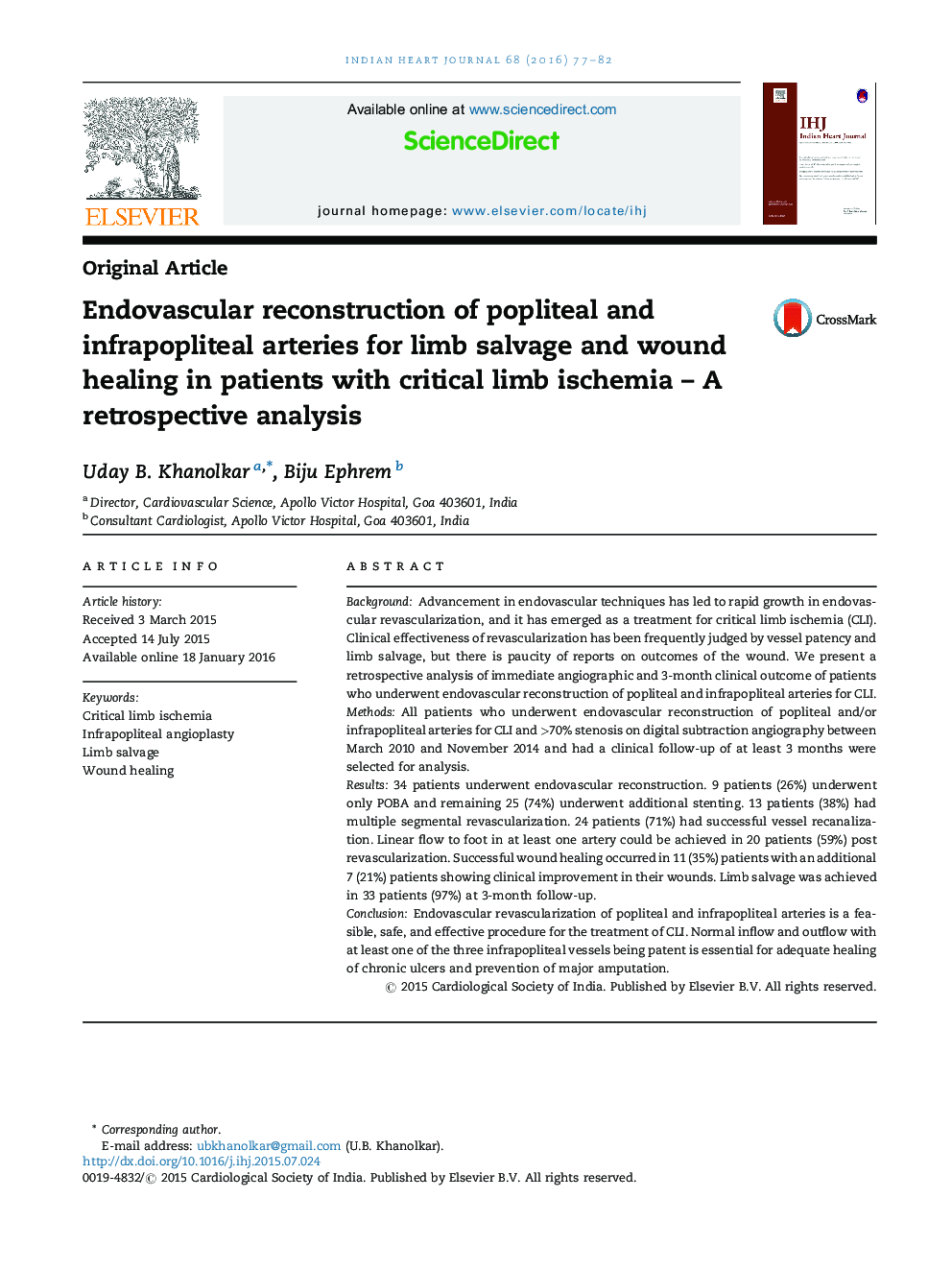| Article ID | Journal | Published Year | Pages | File Type |
|---|---|---|---|---|
| 2927524 | Indian Heart Journal | 2016 | 6 Pages |
BackgroundAdvancement in endovascular techniques has led to rapid growth in endovascular revascularization, and it has emerged as a treatment for critical limb ischemia (CLI). Clinical effectiveness of revascularization has been frequently judged by vessel patency and limb salvage, but there is paucity of reports on outcomes of the wound. We present a retrospective analysis of immediate angiographic and 3-month clinical outcome of patients who underwent endovascular reconstruction of popliteal and infrapopliteal arteries for CLI.MethodsAll patients who underwent endovascular reconstruction of popliteal and/or infrapopliteal arteries for CLI and >70% stenosis on digital subtraction angiography between March 2010 and November 2014 and had a clinical follow-up of at least 3 months were selected for analysis.Results34 patients underwent endovascular reconstruction. 9 patients (26%) underwent only POBA and remaining 25 (74%) underwent additional stenting. 13 patients (38%) had multiple segmental revascularization. 24 patients (71%) had successful vessel recanalization. Linear flow to foot in at least one artery could be achieved in 20 patients (59%) post revascularization. Successful wound healing occurred in 11 (35%) patients with an additional 7 (21%) patients showing clinical improvement in their wounds. Limb salvage was achieved in 33 patients (97%) at 3-month follow-up.ConclusionEndovascular revascularization of popliteal and infrapopliteal arteries is a feasible, safe, and effective procedure for the treatment of CLI. Normal inflow and outflow with at least one of the three infrapopliteal vessels being patent is essential for adequate healing of chronic ulcers and prevention of major amputation.
